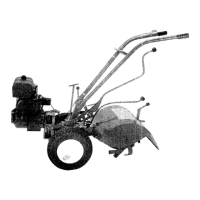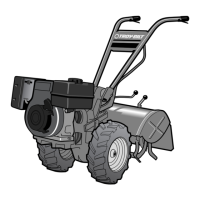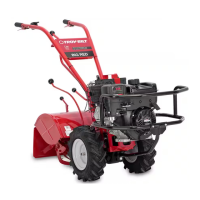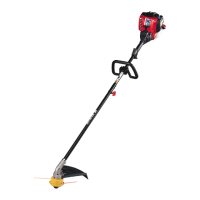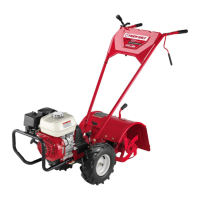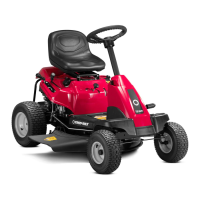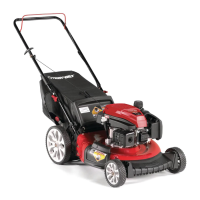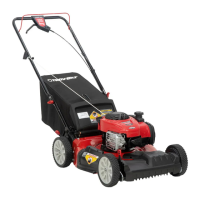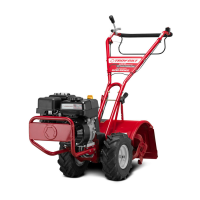CARBURETOR
The
carburetor
shown
in
Photo
4/35 supplies
a
mixture
of
vaporized
gasoline
and
air
to
the
cylinder's
combustion
chamber.
The
carbu-
retor
includes
the
carburetor
body,
throttle,
choke
and fuel
bowl.
IF YOU HAVE
AN
ENGINE PROBLEM
...
FIRST, READ YOUR ENGINE OWNER'S
MANUAL TO
SEE
IF THE ANSWER
YOU SEEK IS RIGHT THERE.
The
following
information
provided
in this
manual
is
not
meant
to
be a
substitute
for
an
Authorized
Serviceman
for
you. It
;s
intended
to
give
you
a
little
helpful
background
and
un-
derstanding
of
what's
going
on
in
your
engine.
Hopefully,
it
might
help
you
to
solve
minor
pro-
blems and
understand
the
need
for
effective
maintenance.
ENGINE COVERS HELP
TO
COOL ENGINE
Please
don't
remove
any
of
the
engine
shroud
or
covers (see Photo 4/1) in an
attempt
to
"give
it
more
air
for
cooling."
You
would
be
defeating
your
own
purpose.
The
cooling
fins,
shroud
and covers are
carefully
designed
to
direct
the
greatest
volume
of
air
over
all
points
of
the
engine
to
avoid uneven heating. Remov-
ing
a
section
of
these
coverings
would
change
the
air
flow
from
its
designed-in
course.
This
could
cause
"hot
spots"
to
develop
in
your
en-
gine
and
could
cause damage
or
even ruin it.
GOVERNOR-6 HP TECUMSEH-LAUSON
Your
engine
has a mechanical
governor
which
protects
the
engine
by
limiting
engine
speed
while
it
allows
the
engine
to
obtain
the
proper
power
for
varying loads. It very
likely
won't
need
any
adjustments
for
years as
long
as the levers and wires are
not
bent. So, it's
wise
not
to
make unnecessary
adjustments
to
the
governor.
Inside the
engine
mounted
on
a
gear
and
shaft
are a
governor
spool
and
two
weights
that
are affected
by
centrifugal
force
in relation
to
engine
R.P.M.-see
Photo
4/36.
The
faster
the
(Photo
4/35)
Carburetor
for
THP
Kohler
engine.
GOVERNOR
GEAR
(Photo
4/36)
Governor
for6
H.P. engine.
weights
spin,
the
more
force
they
exert
against
governor
spring
tension
to
close
the
throttle.
While
the
sprin'g
works
to
open
the
carburetor
throttle,
the
governor
lever and
linkage
tend
to
close
the
throttle.
The
opposing
forces
find
a
balance
point
and keep
the
engine
virtually
at
a
constant
speed.
Maximum
engine
R.P.M. is
3600.
ENGINE COOLING
Don't
remove
any
parts
of
the
engine
covers
or
the
engine
shroud
(see
Photo
4/1). These
covers are designed
to
direct
cooling
air
from
the
flyWheel
over
all
parts
of
the
engine. If
you
removed part
of
these covers
your
engine
would
grow
hotter
not
cooler.
Make sure that dirt, grass, leaves and
debris
are cleaned
from
the
cooling
fins
on
the
top
and
sides regUlarly.
II
53
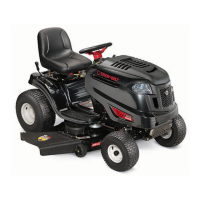
